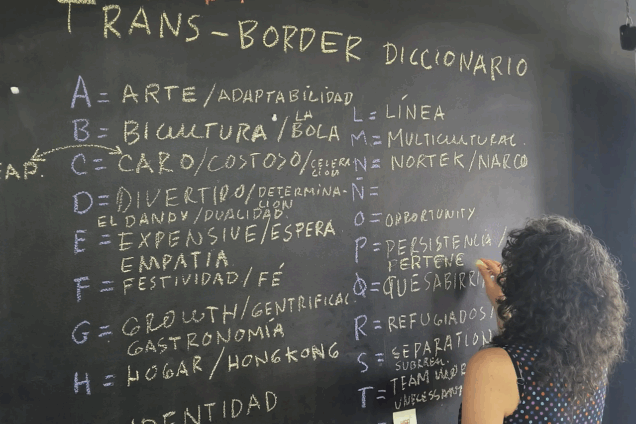
November 24, 2025
Interview with SVA Alumni Scholarship Winner Héctor Ruiz (MFA DSI ’25)
In an interview with Rodrigo Perez (SVA Communications Office) the MFA Design for Social Innovation graduate discusses his award-winning thesis project, We Are Speaking/Estamos Hablando, and the power of collective visual storytelling.
Last spring, for the 2025 SVA Alumni Scholarship Awards, the SVA Alumni Society granted 92 scholarships to students, totaling $63,000 for projects as varied as animation, product design, film, photography, and painting. Funding for the Alumni Scholarship Awards is provided through the SVA Alumni Society’s annual Support the Talent campaign; 100% of all donations go directly to students. This fall, we are spotlighting some of last year’s award recipients and their inspired work.
Today’s featured scholarship recipient is Héctor Ruiz (MFA 2025 Design for Social Innovation), whose project, We Are Speaking/Estamos Hablando, explores how communities can use shared symbols to express lived experiences and advocate for change. Ruiz’s work centers on a four-step facilitation guide that community members, educators, and facilitators can use to co-create a visual language—one that can be programmed into a font and adapted into stamps, signage, and tools for collective storytelling and restorative practices. The project addresses a crucial challenge: developing culturally responsive tools for communities that have been historically excluded from social and political systems.
Ruiz recently answered some questions about his award-winning project, his advice to incoming students, and his experience at the School of Visual Arts.
What inspired the idea for We Are Speaking/Estamos Hablando?
This project started during the pandemic. Back then, I was trying to identify the symbols that a community could take as part of its identity.
Initially, I began experimenting with literal representations of my city, situated on the border between the U.S. and Mexico. When I started sharing these symbols, I realized that community members gave their own meanings to each representation, as well as creating new, abstract-based symbols and representations to represent our community. That’s how I realized the power of collective storytelling and started thinking about how a community could create a tool to share those experiences with a broader audience.
What surprised you the most once you started working on the project?
By working with a community, rather than in isolation, I reframe my approach to my practice. I decided to stop identifying myself as a designer; instead, I chose to identify myself as a facilitator.
What was a highlight of living and studying in New York City?
It is a diverse city that offers a wealth of attractions. For someone who enjoys to learn about different cultures, this is a great place to connect with food, people, and experiences.
What is something you learned at SVA that you’ll always take with you?
“To belong is to know that even in the middle of the night I’m among friends.” From Community: The Structure of Belonging, by Peter Block, a book recommended in MFA Design for Social Innovation’s summer reading list.
Was there a teacher or course that was essential for you?
I enjoyed many classes throughout my program. However, I was particularly motivated by the leadership lessons from Karen Proctor, as well as the research skills I acquired under the guidance of Mari Nakano.
What was your favorite piece of advice that a teacher or student shared with you?
Be rooted. In your identity, your beliefs, and your values.
What advice do you have for next year’s students going through your program?
Enjoy the experience. Work hard. Be kind to everyone. Always try to learn. Stay humble. Be rooted.
Read the SVA FEATURE HERE.
Written by rODRIGO PEREZ – sva cOMMUNICATIONS.
More related links
- Amplifying Women in Innovation Fields | WIN Awards 2025 Blog
- "The Cross Bronx Expressway, through the lens of the communities who live alongside it" | Alejandra Saker (MFA DSI '24) Blog
- AAAAH Weekend 2025 l "We believe visibility is empowerment and connection is transformation" Blog
- Don Norman Design Award Winner 2025 - MFA DSI Alum Blog



